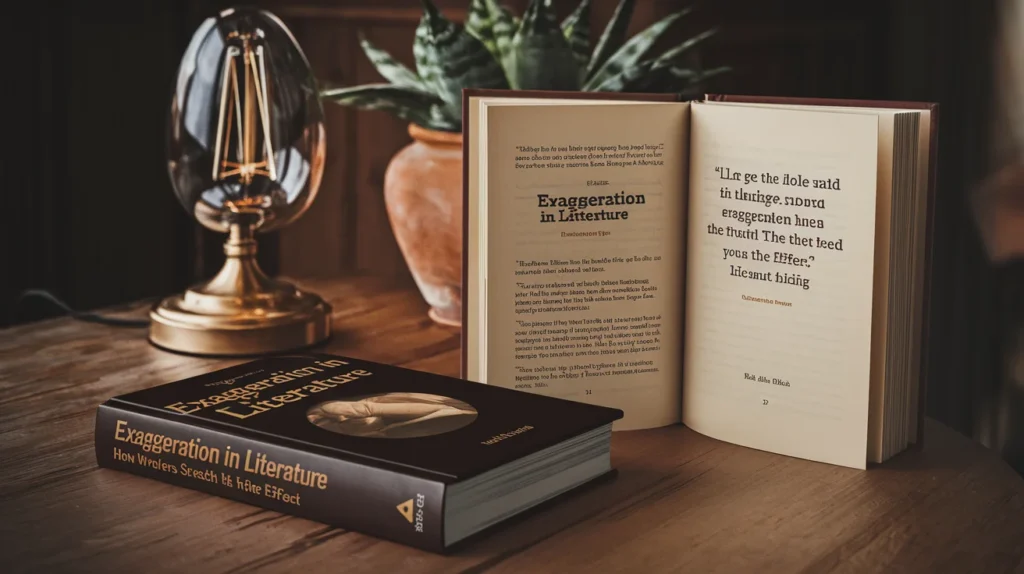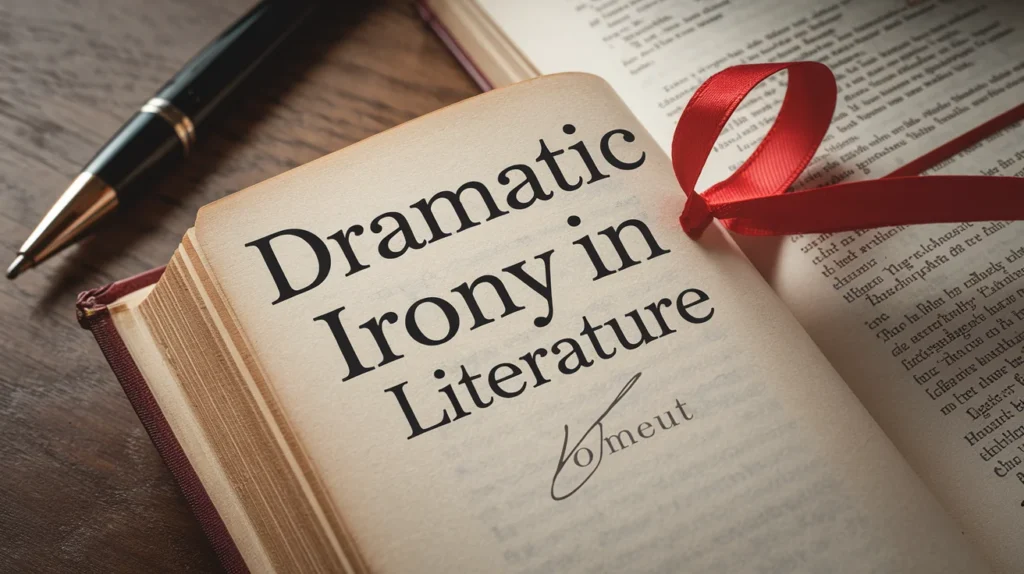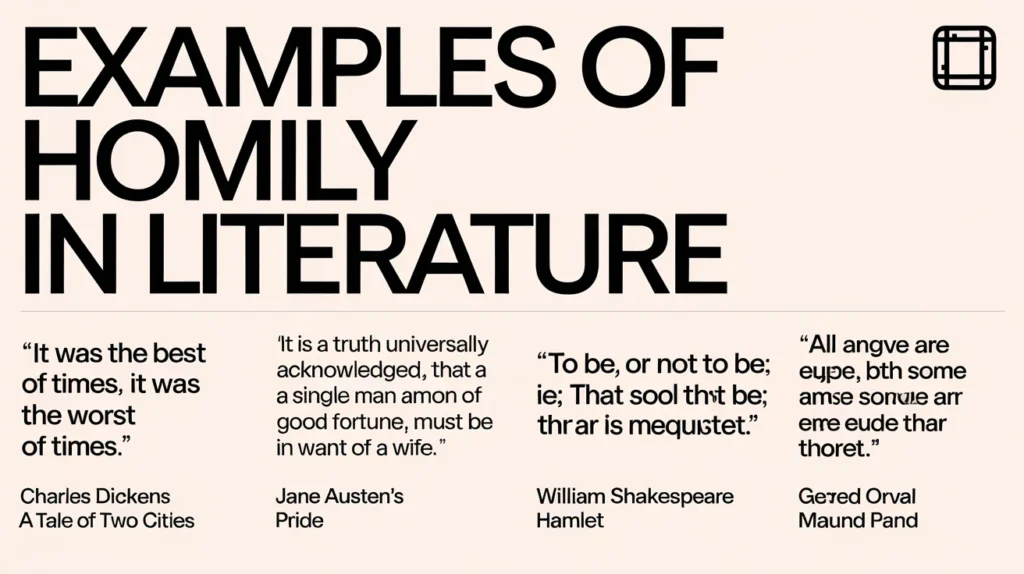Ever read a line like “I’m so hungry I could eat a horse” and wondered why writers bend reality so much? Exaggeration isn’t just tall tales—it’s a powerful literary device that makes stories more engaging, emotional, and memorable. From Roald Dahl’s giant Miss Trunchbull to Holden Caulfield’s dramatic rants in The Catcher in the Rye, exaggeration shapes how we experience literature.
But why do authors rely on it so much? And how can you spot—or even use—exaggeration effectively in your own writing? This guide dives deep into the art of literary exaggeration, exploring its types, famous examples, and why it works so well.
By the end, you’ll:
✔ Understand the difference between exaggeration, hyperbole, and overstatement.
✔ Recognize key examples from classic and modern literature.
✔ Learn how to use exaggeration in your own writing for humor, drama, or emphasis.
Let’s jump in!
What Is Exaggeration in Literature?
Exaggeration is when writers intentionally overstate something beyond reality to create an effect. It’s not lying—it’s amplifying truth for emphasis, humor, or drama.
Key Characteristics of Exaggeration:
- Intentional – The writer knows they’re stretching the truth.
- Purposeful – It serves a narrative or emotional goal.
- Recognizable – Readers understand it’s not meant literally.
“All the world’s a stage, and all the men and women merely players.”
—Shakespeare (As You Like It)
Shakespeare didn’t mean we’re literally actors—he exaggerated to highlight life’s performative nature.
Types of Exaggeration in Writing
Not all exaggeration is the same. Here are the four main types you’ll find in literature:
1. Hyperbole (The Most Extreme Form)
- Definition: Wild overstatements (“I’ve died of embarrassment!”).
- Example: “I’m so tired I could sleep for a thousand years.”
2. Caricature (Exaggerating Traits)
- Definition: Blowing up a character’s features or personality.
- Example: Miss Trunchbull in Matilda—so strong she throws kids like shot puts!
3. Absurdity (Illogical Exaggeration)
- Definition: Reality is bent to surreal extremes.
- Example: Kafka’s Metamorphosis, where a man wakes up as a giant bug.
4. Overstatement vs. Understatement
| Device | Definition | Example |
| Overstatement | Making something seem bigger than it is | “This is the worst day ever!” |
| Understatement | Downplaying something for effect | “It’s just a scratch” (after a car crash) |
Famous Examples of Exaggeration in Literature
Let’s break down five iconic literary exaggerations:
1. “Matilda” by Roald Dahl
- Exaggeration: Miss Trunchbull’s superhuman strength.
- Why It Works: Makes her a larger-than-life villain.
2. “The Catcher in the Rye” by J.D. Salinger
- Exaggeration: Holden’s “everyone’s a phony” mindset.
- Why It Works: Shows teenage angst and alienation.
3. “A Noiseless Patient Spider” by Walt Whitman
- Exaggeration: The soul’s endless searching.
- Why It Works: Deepens existential themes.
4. “When I Have Fears” by John Keats
- Exaggeration: “I may never live to trace / Their shadows with the magic hand of chance.”
- Why It Works: Romanticizes mortality.
5. “The Rime of the Ancient Mariner” by S.T. Coleridge
- Exaggeration: Curses, ghosts, and supernatural punishment.
- Why It Works: Enhances Gothic horror.
Exaggeration vs. Related Literary Devices
| Term | Definition | Example |
| Exaggeration | Broad term for overstating | “This bag weighs a ton!” |
| Hyperbole | Extreme exaggeration | “I’m so hungry I could eat a horse.” |
| Overstatement | Less extreme than hyperbole | “This is the best pizza ever.” |
| Satire | Uses exaggeration to criticize | A Modest Proposal by Swift |
Why Writers Use Exaggeration
- Makes Characters Memorable (Miss Trunchbull, Holden Caulfield).
- Amplifies Emotions (Keats’ fear of death).
- Creates Humor or Drama (Shakespeare’s fools).
- Critiques Society (Swift’s satirical exaggerations).
How to Use Exaggeration in Your Writing
✔ Know Your Purpose – Comedy? Drama? Social critique?
✔ Balance It – Too much feels silly; too little lacks impact.
✔ Read Aloud – Does it sound natural or forced?
Final Thoughts
Exaggeration brings stories to life, whether through hilarious hyperbole or haunting overstatements. Now that you know how it works, try spotting—or using—it in your next read (or write)!
Final Thoughts
Exaggeration brings stories to life, whether through hilarious hyperbole or haunting overstatements. Now that you know how it works, try spotting—or using—it in your next read (or write)!
FAQs About Exaggeration in Literature
1. Is exaggeration the same as lying?
No! Exaggeration is intentional for effect; lying is deception.
2. What’s the difference between hyperbole and exaggeration?
Hyperbole is extreme exaggeration (“I’m dying of laughter!”).
3. Can exaggeration be subtle?
Yes—overstatement is a milder form.


